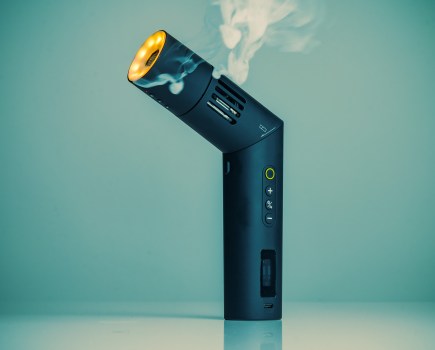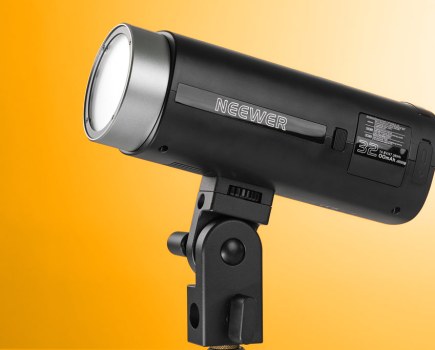Olympus XZ-1 at a glance:
- 10-million-effective-pixel CCD sensor
- Seven frames per second
- ISO 100-6400
- 1280x 720 HD video
- 28-112mm equivalent f/1.8 zoom lens
- Street price around £400
Olympus XZ-1 review – Introduction
Last year was a great one for high-end compact cameras. Canon released the PowerShot G12, Nikon the Coolpix P7000, Samsung the EX1 and Panasonic the Lumix DMC-LX5, winner of the AP High-end Compact of the Year award.
Not to be outdone, Olympus released details of its forthcoming compact, the Olympus XZ-1, which features an 28-112mm (equivalent) f/1.8 Zuiko lens. The camera was officially announced in January this year, at the CES trade show in Las Vegas, and its specification will certainly turn a few heads.
Features
 Like most current high-end compacts, the Olympus XZ-1 uses a 1/1.63in CCD sensor with 10 million pixels. Although the resolution may seem low compared to consumer compacts, the idea is that the reduced resolution should help keep image noise to a minimum, particularly at high sensitivities.
Like most current high-end compacts, the Olympus XZ-1 uses a 1/1.63in CCD sensor with 10 million pixels. Although the resolution may seem low compared to consumer compacts, the idea is that the reduced resolution should help keep image noise to a minimum, particularly at high sensitivities.
With enthusiast photographers in mind, the XZ-1 has the ability to shoot raw and JPEG files, along with a high sensitivity of ISO 6400. However, one of its biggest draws must be the 28-112mm (equivalent) f/1.8 Zuiko lens. The wide aperture of this optic allows for shooting in low light and offers a shallow depth of field, which can be hard to achieve on compact cameras.
The lens delivered as promised in low light and, combined with sensor-shift image stabilisation, gave me the opportunity to photograph night-time cityscapes handheld. However, one area of concern is the presence of barrel distortion when shooting at the shortest focal length.

The zoom lens of the XZ-1 covers a good range, but does suffer from barrel distortion
Taken from the Olympus micro four thirds cameras, the XZ-1 features an accessory port that allows additional devices, such as an electronic viewfinder or external microphone, to be attached to the camera hotshoe, but more on this later.
For those less competent with manual exposure options there are a range of automatic exposure settings and scene modes, including the Live Guide. This setting is also found on the company’s Pen-series cameras, and it is designed to make it simple to change exposure or image settings, with the effect previewed live on the rear LCD screen.
Olympus XZ-1 Features: Score – 8/10
Build and Handling
 Having recently been impressed with the handling and design of the Olympus Pen E-PL2, I was pleased to see that the XZ-1 has much in common with this camera. Both models have just the essential buttons on their rear, with the XZ-1 also featuring the live wheel controller found on the E-PL2. This wheel sits around the directional control buttons and can be rotated to allow menu items and images to be scrolled through quickly.
Having recently been impressed with the handling and design of the Olympus Pen E-PL2, I was pleased to see that the XZ-1 has much in common with this camera. Both models have just the essential buttons on their rear, with the XZ-1 also featuring the live wheel controller found on the E-PL2. This wheel sits around the directional control buttons and can be rotated to allow menu items and images to be scrolled through quickly.
The simplicity and ease of the XZ-1’s controls make it great to use. I was very impressed with how simple it was to change settings, with everything on the on-screen shooting menu self-explanatory and easy to use. Especially useful is the ring at the base of the lens.
Depending on the shooting mode you are in, this dial can be used to change the current settings. However, it feels at its best when used in aperture-priority mode, where it is used to change the lens aperture.
While there are smaller compact cameras available, the XZ-1 is not as large as the Canon PowerShot G12 or Nikon P7000. In terms of size, its body has more in common with the Panasonic Lumix DMC-LX5. The Olympus camera’s solid plastic body fits easily into a jacket pocket and is great for days out when a DSLR is too intrusive. It does become a little awkward to fit into a pocket with the EVF attached, but I found that I could leave this loose in my pocket and attached it when required.
Overall, the build and handling of the XZ-1 is impressive. It is straightforward and intuitive to use and the buttons and controls are well positioned for quick access, making the camera a pleasure to use.
White balance and Colour
For most of the test I set the XZ-1 to its natural or vivid settings. The former produced realistic colours, though a few images needed a touch more contrast. Like the evaluative metering, the automatic white balance worked well in various conditions both during the day and at night. When photographing a tungsten-lit shopping arcade at night, the AWB ever so slightly took the edge off the tungsten cast, leaving it looking as warm as it appeared in reality.
When shooting inside a Viennese cafe, switching the camera to the tungsten setting removed all but the slightest trace of the warm tungsten lighting, and with it a hint of the atmosphere. However, this is obviously preferable if you require a clinically correct white balance.
As well as the standard colour settings, the XZ-1 also includes the Olympus Art Filters. These are a lot of fun to use, and make more sense being in a compact camera than they do in the company’s E-series DSLRs. Of the various filters, the grainy black & white setting is my favourite. It creates high-contrast, gritty images, which I found great for a compact camera. Of course, if you save JPEGs and raw files simultaneously, you’ll get the Art Filter image as well as the raw image file for editing.
Olympus XZ-1 White balance and Colour: Score – 8/10
Metering
During the course of my test the XZ-1 had to deal with a variety of lighting situations, both inside and out, and the 324-zone multi-pattern sensing system coped admirably. As you would expect of any camera, it isn’t infallible but there were only a few occasions when I had to add any sort of exposure compensation. One of these was to lighten images I’d taken in a church. Here, +1EV was needed to bring out detail in the shadows, as the bright light from stained-glass windows fooled the camera’s meter.
As you would expect in a high-end compact camera, centreweighted and spot metering is on hand for more difficult lighting conditions. I would have liked Olympus to have included the highlight and shadow spot metering found on the Pen and E-series cameras in the XZ-1. These settings would be useful with the lower dynamic range of the compact camera sensor and would really give it something its competitors lack.
Olympus XZ-1 Metering: Score – 8/10
Autofocus

Super macro mode allows you to get in extremely close, revealing a lot of detail
As a compact camera the Olympus XZ-1 is reliant on using contrast-detection AF, and I found the AF speed to be comparable with similar compact cameras. It is fairly snappy and suitable for most situations in which you would want to use a compact camera.
In its default mode there are 11 AF points available, but when using a magnified view on the rear screen there are up to 225 available points, which really helps with fine focusing. For moving subjects, AF tracking and face-detection AF are also available.
One thing to note is that the close-focusing distance of the lens, at 60cm, is not quite as close as you would expect. For this reason there is both a macro and a super macro mode. The former has a minimum focus distance of 10cm, while the latter is just 1cm. These modes were extremely useful when I was taking photographs in a butterfly house, allowing a great deal of detail to be revealed that was difficult to see with the naked eye.
Olympus XZ-1 Autofocus: Score – 7/10
Noise, Resolution and Sensitivity

Noise and noise reduction becomes a problem once the ISO sensitivity is increased beyond ISO 400, causing a huge loss of detail
With a 1/1.63in, 10-million-pixel sensor, Olympus has kept the XZ-1 at a sensible resolution. When shooting our test chart the camera was able to resolve as much detail as an equivalent DSLR camera at its lowest ISO sensitivity settings. However, when taken out of the testing studio and into the real world, the noise and noise reduction starts to hinder the
resolution at around ISO 400.
By ISO 800 it is fairly obvious in most images, and beyond this point starts to seriously affect the amount of detail that can be resolved. For instance, images taken at ISO 3200 and ISO 6400 are a mushy blur. The increased sensitivity means that any bright points of light affect neighbouring photosites, giving a magenta tinge to surrounding areas.
Although it is handy to have the higher ISO settings, they should really be avoided. Olympus should have left the ISO 1600 setting as the maximum, especially as the f/1.8 aperture and image stabilisation make it possible to shoot in low light at this sensitivity.
 Resolution charts:
Resolution charts:
These images show 72ppi (100% on a computer screen) sections of images of a resolution chart, captured using the kit lens set to 50mm (75mm equivalent).
We show the section of the resolution chart where the camera starts to fail to reproduce the lines separately.
The higher the number visible in these images, the better the camera’s detail resolution at the specified sensitivity setting.
Olympus XZ-1 Noise, Resolution and Sensitivity: Score – 26/30
Dynamic range
Having a smaller compact camera sensor, the Olympus XZ-1 has, of course, a more limited dynamic range than a DSLR, and as a result highlights are quite easily burnt out. At the darker end of the scale it is possible to brighten shadow areas but, due to the noise this causes, little detail can be resolved.
This makes photographing high-contrast scenes a real battle between whether to exposure for the highlights or the shadows.In a more general scene with less contrast, the dynamic range is
obviously far more forgiving and by tweaking the shadows by up to 1EV it is possible to recover some detail without introducing too much image noise.
Olympus XZ-1 Dynamic range: Score – 8/10
Viewfinder, LCD, Live View and Video
Measuring 3in from corner to corner, the LCD screen of the Olympus XZ-1 is a good size, with a 610,000-dot resolution. Although not as a highly specified as a DSLR screen, it is quite impressive for a compact camera.
One thing that will appeal to many photographers is the option to use an EVF with the XZ-1. The Olympus VF-2 slides on to the camera’s hotshoe and plugs neatly into the accessory port, which sits just below. This is the same EVF that can be used in the Pen range of cameras and has a 1.44-million-dot equivalent resolution.
I found it a nice addition to the camera and used it on numerous occasions. However, while it isn’t bad it could be improved, and the newer EVF models featured with the likes of Panasonic’s G-series cameras are better. Costing £219, it is an expensive accessory but it is great if you already own it for an Olympus micro four thirds model.
Those who record video on their travels will be pleased to see that HD video capture is possible with the XZ-1. The camera records at 1280×720-pixel resolution at 30fps, with a maximum recording time of
7mins. Sound is recorded in mono, but the accessory port of the XZ-1 allows the Olympus SEMA-1 stereo microphone and adapter (£99.99) to be used.
Olympus XZ-1 Viewfinder, LCD, Live View and Video: Score – 8/10
Our Verdict
I really enjoyed using the Olympus XZ-1. It handles nicely and has all the settings and features an enthusiast photographer would want. The much talked about f/1.8 lens is great in low light and creates a shallow depth of field, although it does distort at wide angles. That said, many compact cameras suffer from lens distortion at short focal lengths and most manufacturers correct this in-camera.
Despite being able to resolve a good amount of detail at lower sensitivities, images really start to suffer the effects of noise and noise reduction once ISO 400 is reached. Kept at this sensitivity or below, the XZ-1 is a great high-end compact camera if you plan to use it for travelling, but don’t expect to be making large, detailed enlargements from the images it produces.
It is great to see Olympus adding such a model to its line-up, and I look forward to seeing the next few generations of the XZ series. Hopefully, the image quality can be improved, maybe even with a simple firmware update. But for now the Panasonic Lumix DMC-LX5 remains the compact camera of choice for the enthusiast photographer.
Olympus XZ-1 Our Verdict: Score – 81%








